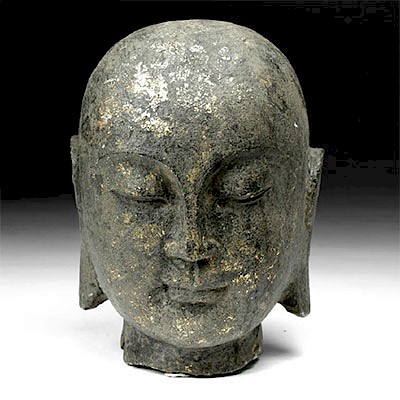Rare Roman Molded Amber Glass Bowl
Lot 74
About Seller
Artemis Fine Arts
686 S Taylor Ave, Ste 106
Louisville, CO 80027
United States
Selling antiquities, ancient and ethnographic art online since 1993, Artemis Gallery specializes in Classical Antiquities (Egyptian, Greek, Roman, Near Eastern), Asian, Pre-Columbian, African / Tribal / Oceanographic art. Our extensive inventory includes pottery, stone, metal, wood, glass and textil...Read more
Estimate:
$3,000 - $4,500
Absentee vs Live bid
Two ways to bid:
- Leave a max absentee bid and the platform will bid on your behalf up to your maximum bid during the live auction.
- Bid live during the auction and your bids will be submitted real-time to the auctioneer.
Bid Increments
| Price | Bid Increment |
|---|---|
| $0 | $25 |
| $300 | $50 |
| $1,000 | $100 |
| $2,000 | $250 |
| $5,000 | $500 |
| $10,000 | $1,000 |
| $20,000 | $2,500 |
| $50,000 | $5,000 |
| $100,000 | $10,000 |
| $200,000 | $20,000 |
About Auction
By Artemis Fine Arts
Nov 29, 2018
Set Reminder
2018-11-29 10:00:00
2018-11-29 10:00:00
America/New_York
Bidsquare
Bidsquare : Holiday Glitz - Ancient / Ethnographic Art
https://www.bidsquare.com/auctions/artemis-gallery/holiday-glitz---ancient-ethnographic-art-3672
What to give this holiday season? Think silver, gold, bronze, shiny, glittery, wearable, festive. We ship worldwide and handle all shipping in-house for your convenience. This is one sale you don't want to miss! Artemis Fine Arts info@artemisgallery.com
What to give this holiday season? Think silver, gold, bronze, shiny, glittery, wearable, festive. We ship worldwide and handle all shipping in-house for your convenience. This is one sale you don't want to miss! Artemis Fine Arts info@artemisgallery.com
- Lot Description
Rome, Imperial Period, ca. 2nd to 4th century CE. In a word, WOW! This vessel is quite a gem - created via a complicated process involving gradually blowing the glass into a mold and then repositioning it to create the basketweave-like pattern comprised of bands of slightly concave oblong depressions that interweave with one another and boasting luscious caramel amber and golden yellow hues - the exterior walls mesmerize with brilliant color, pattern, iridescence, and translucency! Size: 4.75" in diameter x 1.875" H (12.1 cm x 4.8 cm)
For collectors of Roman glass, some colors are more prized than others. The brilliance of golden amber is certainly among these. In addition to this vessel's beautiful hue, its form is most unusual. The following quote poetically describes the artistic process of creating free-blown glass in ancient Rome, "First he heated the very point of the iron, then snatched from nearby a lump of bright glass and placed it skillfully within the hollow furnace. And the crystal as it tasted the heat of the fire was softened by the strokes of Hephaestus like . . .he blew in from his mouth a quick breath . . . .like a man essaying the most delightful art of the flute. The glass received the force of his breath and became swollen out around itself like a sphere before it. It would receive another onslaught of the divine breath, for often swinging it like an ox-herd his crook he would breath into . . ." ( P. Oxy. 50.3536, a third century poem on glass blowing - R.A. Coles, Oxyrhynchus Papyri 50 (1983), p. 58 from "Solid Liquid" catalogue, Fortuna Fine Arts, New York, 1999, p. 56)
Provenance: private East Coast, USA collection
All items legal to buy/sell under U.S. Statute covering cultural patrimony Code 2600, CHAPTER 14, and are guaranteed to be as described or your money back.
A Certificate of Authenticity will accompany all winning bids.
We ship worldwide and handle all shipping in-house for your convenience.
#135260Broken pontil mark on concave center of base. Two old nicks on interior base. Traces of silvery and rainbow iridescence grace the interior and exterior walls.Condition
- Shipping Info
-
All shipping is handled in-house for your convenience. Your invoice from Artemis Gallery will include shipping calculation instructions. If in doubt, please inquire BEFORE bidding for estimated shipping costs for individual items.
-
- Buyer's Premium



 EUR
EUR CAD
CAD AUD
AUD GBP
GBP MXN
MXN HKD
HKD CNY
CNY MYR
MYR SEK
SEK SGD
SGD CHF
CHF THB
THB
















